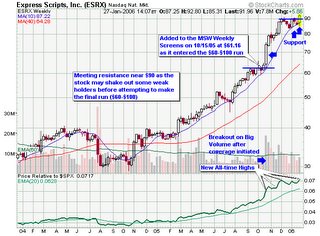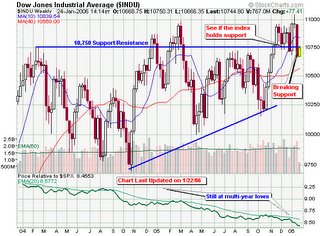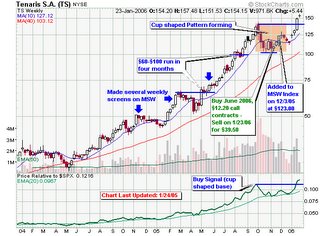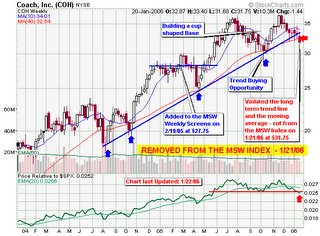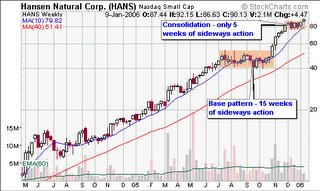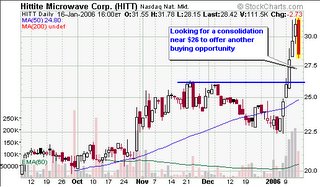The New High – New Low (NH-NL) ratio finished at 826-33 on Friday, the largest single day total since July 11, 2005 when it closed at 826-17. We have been following the weekly NH-NL weekly averages since the week of July 16, 2005 and have not had a more successful week than the past five days. This week’s average of 516-46 slightly edges out the week of July 30, 2005 when the ratio closed at 511-28. This was only the fourth week in the past six months where the weekly average closed above 500 new highs.
Below is a list of the weekly averages since July 16, 2005:Saturday, July, 16, 2005:
503-21
Saturday, July 23, 2005: 382-23
Saturday, July 30, 2005:
511-28Saturday, August 6, 2005: 465-38
Saturday, August 13, 2005: 250-62
Saturday, August 20, 2005: 124-59
Saturday, August 27, 2005: 129-62
Saturday, September 3, 2005: 267-71
Saturday, September 10, 2005: 375-48
Saturday, September 17, 2005: 253-63
Saturday, September 24, 2005: 226-157
Saturday, October 1, 2005: 255-116
Saturday, October 8, 2005: 197-144
Saturday, October 15, 2005:
46-317Saturday, October 22, 2005:
73-220Saturday, October 28, 2005:
111-162
Saturday, November 5, 2005: 241-93
Saturday, November 12, 2005: 231-111
Saturday, November 19, 2005: 248-155
Saturday, December 02, 2005: 312-73
Saturday, December 10, 2005: 309-77
Saturday, December 16, 2005: 293-104
Saturday, January 7, 2006: 473-47
Saturday, January 14, 2006:
500-32
Saturday, January 21, 2006: 348-46
Saturday, January 28, 2006:
516-46
As you can see, we are starting to gain some strength in January with two of the past three weeks averaging 500 new highs or greater. January has been one of the strongest months over the past year and the leaders are starting to gain momentum. Backing up the strength of the ratio has been the performance of the MSW Index over the past several weeks. As mentioned yesterday on the weekly screen, the MSW Index gained 4.65% this week, topping all of the major market indices and the IBD 100. Netlogic (NETL) was the biggest mover with a 20.25% gain, bringing its total gain on MSW to 56% since it was posted on 11/11/05. As you know, I only added one new stock to the Index this week, bringing the total to 27 stocks but I am studying a few others.
Looking at the NASDAQ, which was up 2.5% for the week, we can see how the Index moved back above the 2,275 level (the short term support/resistance line). The index also crossed back above the 50-d moving average on the largest positive weekly volume in the past two years.

Both the DOW and the S&P 500 crossed back above their respective 50-d moving averages with the DOW recovering the 10,750 support/resistance line. The small cap S&P 600 hit a new all-time high with a 3.4% gain while the MidCap 400 also hit an all-time new high with a 2.2% weekly gain.

Continue to monitor the major indices (price and volume), the NH-NL ratio and the individual stock market leaders. Here are some of our MSW Index leaders over the past few months:
(GMXR) – 90%
(CTRN) – 70%
(HANS) – 62%
(NETL) – 56%
(CRDN) – 52%
(ESRX) – 51%
(NWRE) – 42%
(OXPS) – 33%
Piranha




